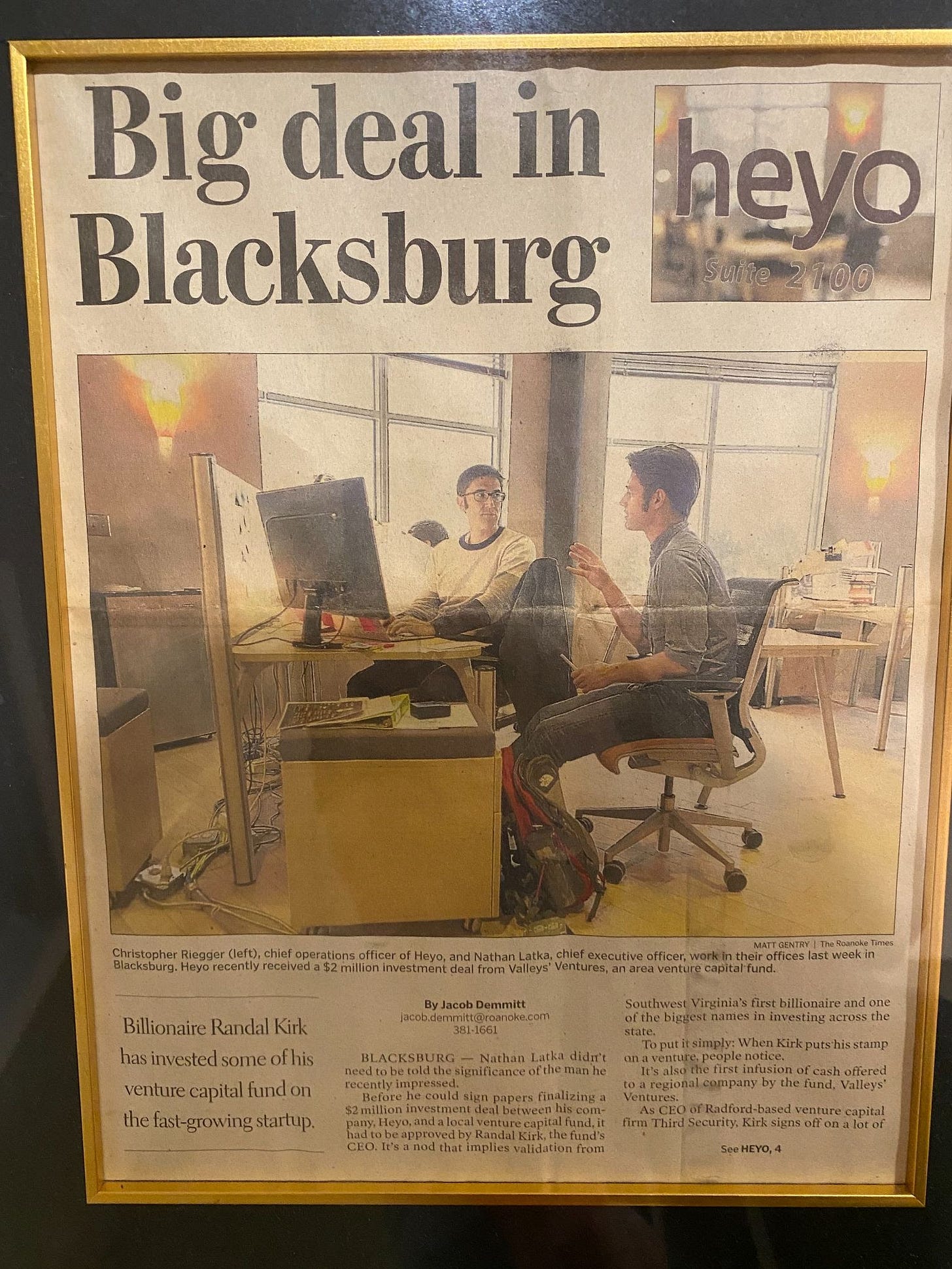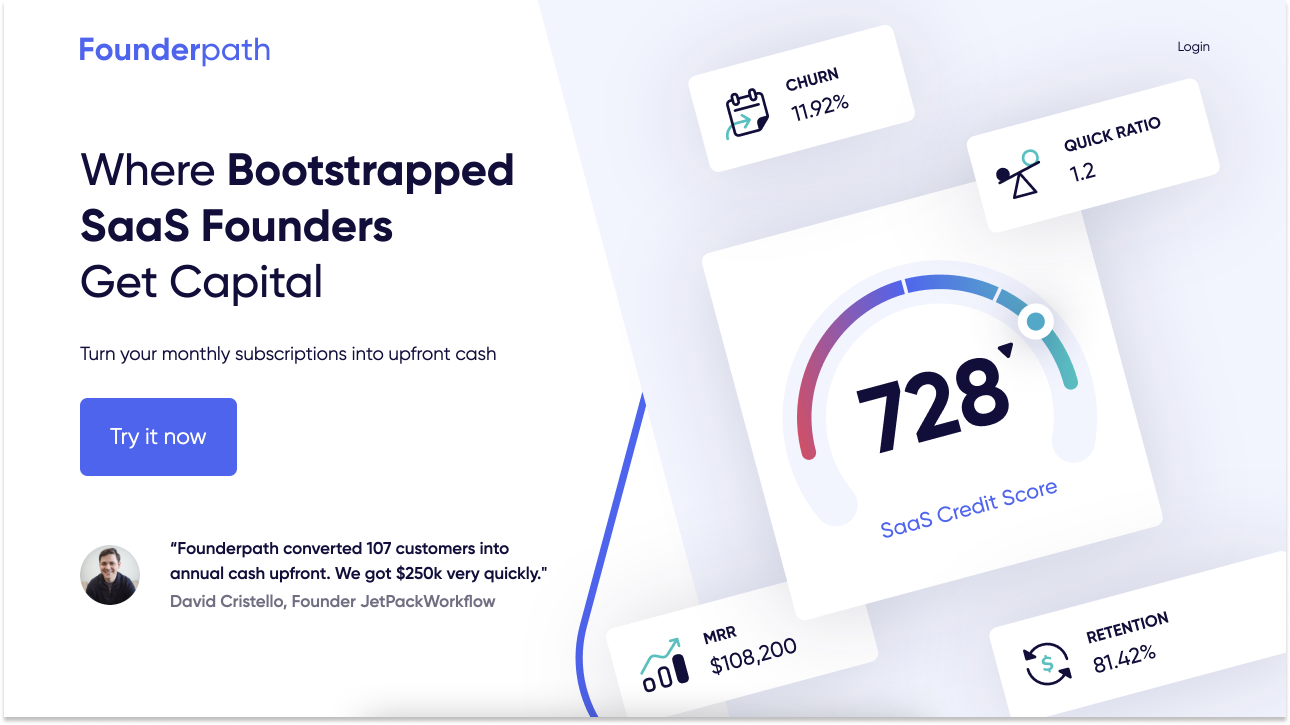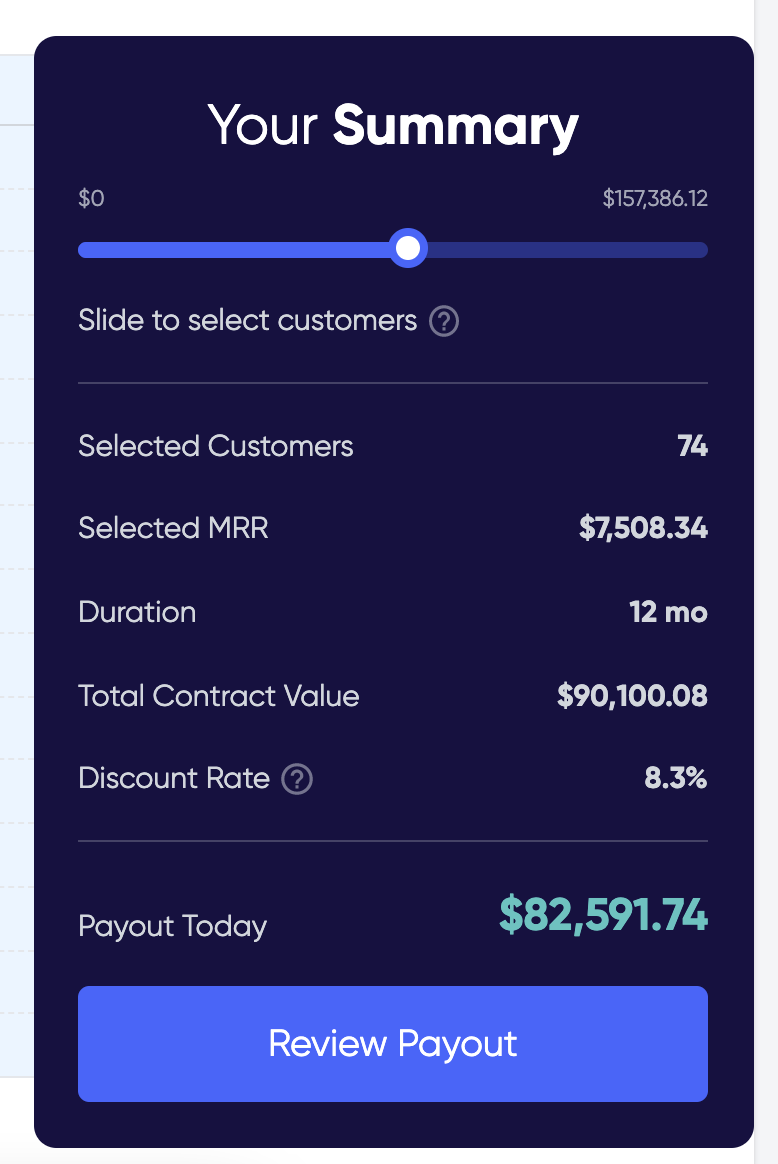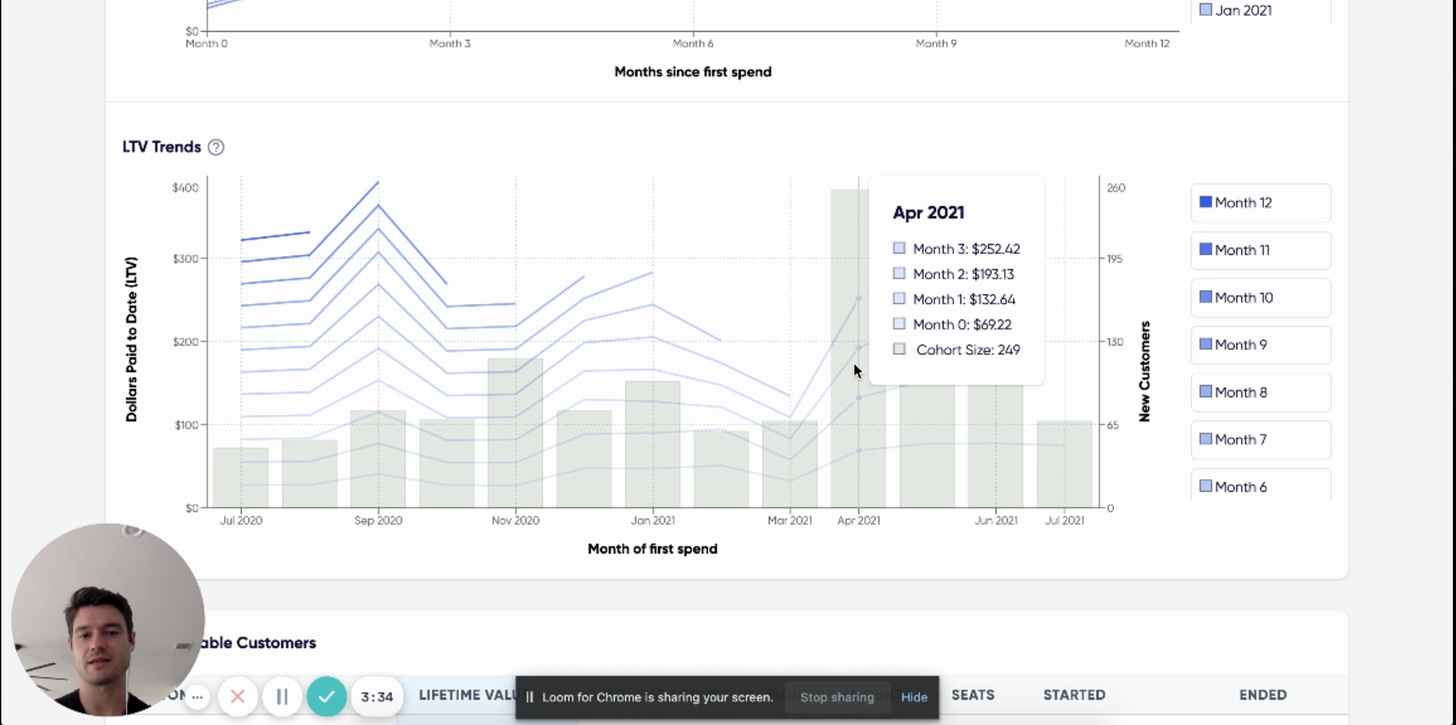Founderpath and Nathan Latka
Helping founders of (mostly) self-funded businesses get capital to accelerate growth without giving up equity or a board seat.
Nathan Latka is the founder of Founderpath, which is a company that helps founders of self-funded businesses (often referred to as “bootstrapped” businesses) get capital so that they can accelerate their growth without having to give up equity or a board seat. Founderpath has two parts to their business. First, they offer loans to companies with terms that are based on the cash flow of the company. Second, they offer a number of different free business analytics tools designed to help founders better understand their business, customers, marketing, and more.
There are obviously many different ways to grow and fund a business, whether it’s self-funded with cash coming from sales or it grows from funding from outside investors. Each has their benefits depending on the circumstances and size of the business. Founderpath is trying to meet a market need for the self-funded entrepreneur.
Nathan started Founderpath because he did the exact opposite for his first company. He raised $2m dollars, burned through the cash, and it eventually all came crashing down.
For his first company, Nathan had been an undergrad at Virginia Tech when he started a Saas business that helped small-business owners gain followers on Facebook and Twitter and convert those followers into sales. By 2015 he had grown it to $50k monthly recurring revenue and decided to take $2m from a local venture capitalist. As Nathan put it, “I thought this funding would solve all my problems.”
“The headline I cared about so much was finally here ‘Latka raises $2m from Forbes Billionaire’ was blazed across the top of the paper in 36px Times New Roman font. I was so silly, I framed it.”
The company continued to grow and he received an acquisition offer that “would've made [him] ‘well off’ at the ripe age of 22.” But he turned it down. His board wanted him to go for an even bigger offer. “Our board meetings sounded like: ‘Spend more money faster to grow!’”
But, revenue stalled and eventually he had to sell the company for a loss.
After that experience Nathan focused on learning more about and celebrating founders who had created profitable businesses without taking venture capital. He started a podcast and began to share the conversations he was having. “I was determined to learn from as many CEOs as I could to make sure I knew as much as possible before launching my next venture.”
Founderpath was a culmination of all those conversations. He identified an opportunity to help founders get access to cash, as well as, a complimentary suite of free tools to help founders analyze their businesses. He launched Founderpath on Product Hunt in August 2020 and was the #3 product of the week.
In our conversation, Nathan talks about:
How he judged the success of his Product Hunt launch by how many conversations it started with founders
How his media business is the primary driver for new customers
How their strategy has evolved over the past year to be more focused on building a lot of tools that Saas founders would expect and giving them away for free
The importance of being committed to growing your baseline and not being distracted by the spikes of a product launch
My questions are in bold; this interview has been lightly edited for clarity.
Let’s start at the beginning. From what I read it appears that the idea for Founderpath came out of tons of conversations you had with SaaS CEOs who were asking you for help raising money for their businesses. Can you give me a quick overview of how Founderpath started?
Nathan Latka: Founderpath started in 2019 because I had interviewed about 3,000 SaaS founders for my podcast. Really, they were bootstrapped SaaS founders. I had been thinking that bootstrap founders need more love. The headlines are always, “VC backed founder and big valuation,” things like that. But, bootstrapped founders were generating profits. They were happy. They own 100% equity. So we wanted to focus on these founders and specifically giving them a way to get capital. Today, Founderpath helps turn monthly recurring revenue into upfront cash for bootstrapped Saas businesses. When we launched on Product Hunt we were also giving away a bunch of free reporting tools to help these types of founders. Founders can visit Founderpath.com/get-started to see how much capital they can get today.
Tell me more about the launch of Founderpath, it looks like you started by productizing a calculator to help founders? How were you gauging the success of the launch?
NL: We did a lot of things to sort of get off the ground. It all started actually with a blog post I wrote before the launch, in July 2020, that was called: “Venture Debt: 50+ Options for Anti-VC SaaS Founders.” The post did really, really well and got 6,700 views. I’ve since updated it a few times and added what we do at Founderpath. Anyways, that showed there was an interest in this area.
I also gave a keynote at SaaStr called Founder Power, where I talked about how founders have a lot of options today when it comes to financing their businesses, whether it’s venture debt or other equity alternatives. This talk also did really well, and got lots of engagement and comments. We used all that momentum to officially launch the Founderpath.com site and deploy our first couple of million dollars and capital. The way that we were judging the success of our Product Hunt launch was by how many conversations did it start with founders? Can we meet more founders at scale? The launch did just that. It generated lots and lots of great conversations with founders.
How has your product strategy evolved over the past year? Was there anything you spent a lot of time on pre-launch that has turned out not to matter as much?
NL: We spent a lot of time prelaunch thinking about the terms of our capital. We thought the key thing that was going to determine if Founderpath was successful was the term loans. So a four year payback with funky terms that require legal. But, what we learned very quickly was that no, actually what founders want is no lawyers. They don’t want to give up equity. They don't want to give up board seats. They want $100k today and to pay it back over the next 12 months with the flexibility to take more capital whenever they want. Today, we have founders coming to Founderpath taking capital every 3 to 6 weeks as they scale their businesses. Many are now relying on Founderpath’s money, which is much cheaper than VC dollars because we don’t take equity or a board seat. So that's where we're doubling down.
We’ve certainly evolved our product strategy. Our strategy is now more focused on building a lot of tools that Saas founders would expect and giving them away for free. For example, we built free tools that help founders calculate lifetime value or revenue growth over time. You can see some examples of that here. You can see the retention curves for your business. Or here, you can look at lifetime value curves.
What this chart tells me is back in April, we signed up a lot of customers at a certain price point and customer growth continued after that. In month zero, the first 30 days, they paid $70 per month, and it grew from there. It’s actually doubled every year.
So, again, we're launching a lot of these types of reporting tools in Founderpath so that founders can get more than just capital from us.
Can you tell me about your customer acquisition strategy? What have you found to be the most effective way at acquiring customers?
NL: Our acquisition strategy is really a media business. I launched a media business five years ago in 2015 which started with a podcast. The podcast, which is called “The Top Entrepreneurs” just passed 15 million downloads and I've interviewed some of the fastest growing bootstrap Saas founders in the world. Folks like Zeb Evans of Clickup or Nathan Barry of ConvertKit. We've also had more unknown founders like JB Kellogg of Madwire which he grew to $100m in revenue.
So really, our acquisition strategy is a media business combined with a large email list of 40k subscribers that we’ve built at GetLatka.com. We use those channels to connect with new founders very quickly and effectively.
Where do you expect Founderpath to be a year from now?
NL: A year from now Founderpath will have about one 100 million dollars of capital deployed to bootstrap Saas founders so that they can keep growing without giving up board seats or equity. This way when they eventually sell they make more money or if they decide to just stick with building a great business that pays them dividends every year, they can do this without someone breathing down their neck at the board meetings asking them to grow faster.
A year from now, we'll be supporting thousands of Saas founders. Over a thousand will have taken capital from us and they’ll have access to a lot of great reporting tools. We'll be continuing to think about how we can help founders with reporting, growth, and setting them up to be successful in other ways besides giving them capital.
A lot of entrepreneurs struggle in that first year as they try to find product market fit and the buzz from the launch has worn off. How did you manage to stay motivated and focused after the excitement of the initial launch?
NL: Going into our launch we said to each other that we're doing this business for five years no matter what. Even if the Product Hunt launch fails, we're doing this for five years no matter what. It's the same way that I thought about my podcast. When I published the first episode in August 2015 I had made a commitment to do a year of publishing no matter what, even if nobody listened. I think that's the key to any successful launch, you have to understand the launch is a spike and to be successful you've got to be committed to growing your baseline. What happens after the spike when it’s just the baseline day to day is what really matters. That's the true sign of growth.
Thanks for taking the time to answer my questions!
NL: Of course, thanks for including me.
I hope you enjoyed my interview with Nathan and learned a few things. If you did, give it some love on Twitter with a RT or Like. This helps more people discover my newsletter 😊 -Tyler






